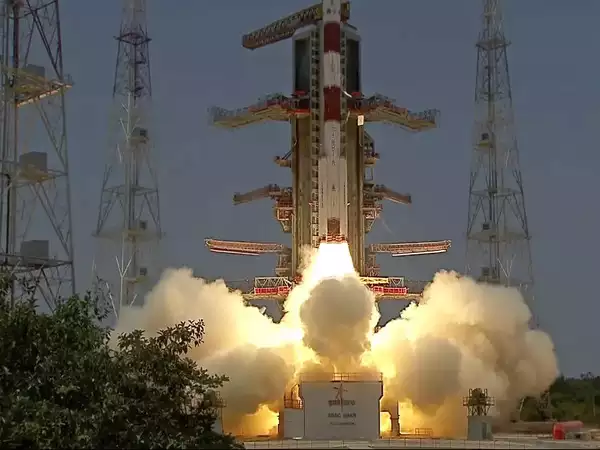India’s emergence as a prominent player in the global space community is underscored by its remarkable ability to conduct cost-effective space missions. The recent launch of the Aditya L-1 solar observatory exemplifies India’s commitment to scientific exploration while maintaining a tight budget. This article delves into the factors that have enabled India to launch such affordable space missions and explore the significance of the Aditya L-1 mission in advancing our understanding of the Sun.
The Indian Space Research Organisation (ISRO) has been making headlines with its successful missions, and the launch of Aditya L-1 marks another milestone in its journey toward unlocking the mysteries of the cosmos. Let’s examine how India has mastered the art of conducting space missions on a budget and how the Aditya L-1 mission fits into this narrative.
India’s Moon Mission, Chandrayaan-3 cost about $74 million, which was less than half the cost of Russia’s south-pole lander ($200 million), which misfired its engines and crashed on August 20, as well as the estimated budget of NASA’s planned VIPER rover to the lunar south pole ($433.5 million). While India’s Sun Mission, Aditya-L1’s price tag is about 3.8 billion rupees, or $46 million US at current exchange rates. So how exactly is India able to launch such cheap missions, we will try to tell you in this article.
Cost-Effective Space Missions: The ISRO Advantage
India’s ability to launch cost-effective space missions can be attributed to several key factors:
- Frugal Engineering: ISRO’s philosophy of “frugal engineering” emphasizes efficiency and simplicity. By minimizing complexity and reusing technology, ISRO significantly reduces mission costs.
- Skilled Workforce: India boasts a highly skilled workforce of scientists, engineers, and technicians dedicated to space exploration. Their expertise and commitment play a pivotal role in keeping costs down.
- Streamlined Decision-Making: ISRO operates with an efficient decision-making process, enabling quick approvals and minimal bureaucratic obstacles. This agility helps in preventing mission delays and cost overruns.
- Incremental Development: ISRO adopts an incremental approach to technology development, building on past successes. This method minimizes risks associated with untested technologies and ensures cost-effective mission execution.
- Commercial Launch Services: ISRO’s commercial arm, Antrix Corporation, provides affordable launch services to international clients, generating revenue that offsets the cost of India’s space program.
The Aditya L-1 Mission: A Sunward Journey
Aditya L-1, India’s solar observatory mission, represents a significant step in its quest for affordable yet scientifically valuable space exploration. Launched in September 2023, this mission aims to study the Sun, particularly its outermost layer, the solar corona, and its effects on Earth.
Mission Objectives:
Aditya L-1 has several primary objectives, including:
– Studying the solar corona to better understand its dynamics and magnetic fields.
– Monitoring solar activities such as solar flares and coronal mass ejections (CMEs) and their impact on space weather.
– Investigating the “coronal heating problem,” a fundamental mystery in heliophysics regarding the Sun’s extremely high-temperature corona.
Cost-Effective Design:
Aditya L-1 was developed with cost-efficiency in mind, capitalizing on existing technology and infrastructure. Its payload includes instruments like the Visible Emission Line Coronagraph (VELC), the Ultraviolet Imaging Telescope (UVIT), and spectrometers to capture essential solar data.
International Collaboration:
ISRO actively collaborates with international space agencies and institutions on Aditya L-1, strengthening its scientific capabilities and fostering global cooperation in space exploration.
PSLV-C51 Launch:
The mission was launched using ISRO’s dependable Polar Satellite Launch Vehicle (PSLV), renowned for its cost-effectiveness. This choice further contributed to the mission’s affordability.
The Significance of Aditya L-1
Aditya L-1 holds immense significance for space science and India’s space program in several ways:
- Scientific Advancements: The mission promises significant scientific discoveries, expanding our knowledge of solar phenomena and their impact on Earth. It addresses critical questions about space weather, solar flares, and CMEs.
- Economic Growth: ISRO’s commercial satellite launch services generate substantial revenue, contributing to India’s economic growth. The cost-effectiveness of these launches makes India an attractive choice for international satellite deployment.
- International Collaboration: India’s space program facilitates collaboration with other space agencies worldwide, strengthening scientific cooperation and knowledge sharing.
- Space Diplomacy: ISRO’s reputation as a reliable launch service provider and scientific collaborator enhances India’s position in space diplomacy, fostering international relations.
Challenges and Future Endeavors
While India’s achievements in cost-effective space missions are commendable, several challenges and opportunities lie ahead:
- Competition: The global space race is intensifying, with more countries and private entities entering the field. India must continue to innovate and adapt to remain competitive.
- Talent Retention: ISRO needs to focus on retaining top talent and nurturing the next generation of space scientists and engineers to sustain its success.
- Space Exploration: India’s aspirations for human spaceflight and lunar exploration require additional investments and innovation to become a reality.
India’s remarkable success in conducting cost-effective space missions, exemplified by the launch of Aditya L-1, showcases the nation’s dedication to advancing scientific knowledge while managing costs effectively. ISRO’s philosophy of frugal engineering, combined with a skilled workforce and streamlined decision-making, has propelled India onto the global stage of space exploration. The Aditya L-1 mission is not only a testament to India’s capabilities but also a promising endeavor that promises to shed light on the mysteries of the Sun, benefiting scientific understanding worldwide.
Low cost and best talent
You must have watched on TV ISRO scientists celebrating the Vikram lander touchdown on the Moon yesterday. They looked close-knit. That also is the secret of ISRO’s success and its Ic down-to-earth scientists remain eager to keep tight budgets.
Anyone who has taken a peep into the mission control at the Satish Dhawan Space Centre at Sriharikota would have been struck by the simplicity of ISI scientists. “We have a cohesive team which has an open culture. It is a cult developed from the times of Vikram Sarabhai, who used to treat everyone including the cook and the gardener as friends,” then ISRO chairman G.
Madhavan Nair had told TOl after the launch of Chandrayaan-3 in 2008. Does that mean there are no ego clashes between scientists? “Oh, yes, there may be some, but we thrash out things in the open. For everyone, the success of our projects is the ultimate goal.”
Read More:











